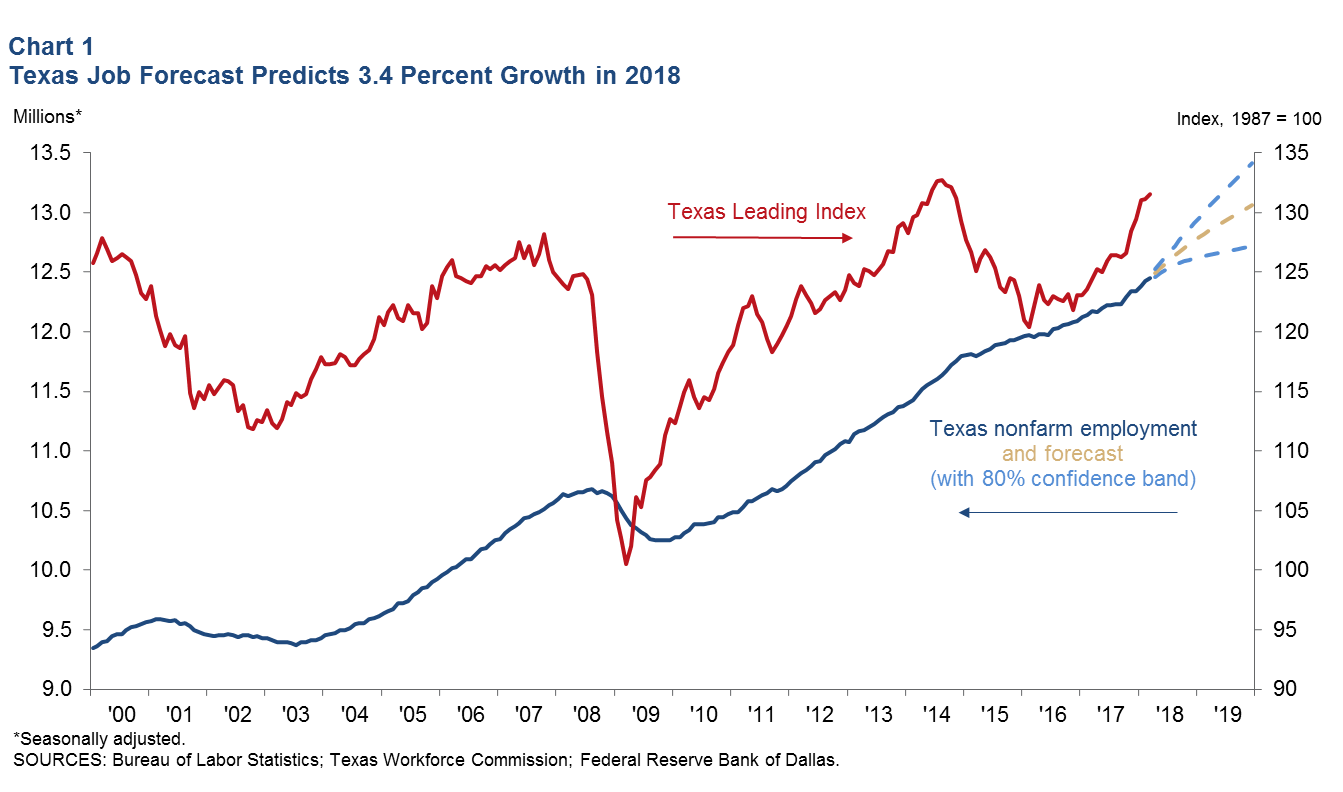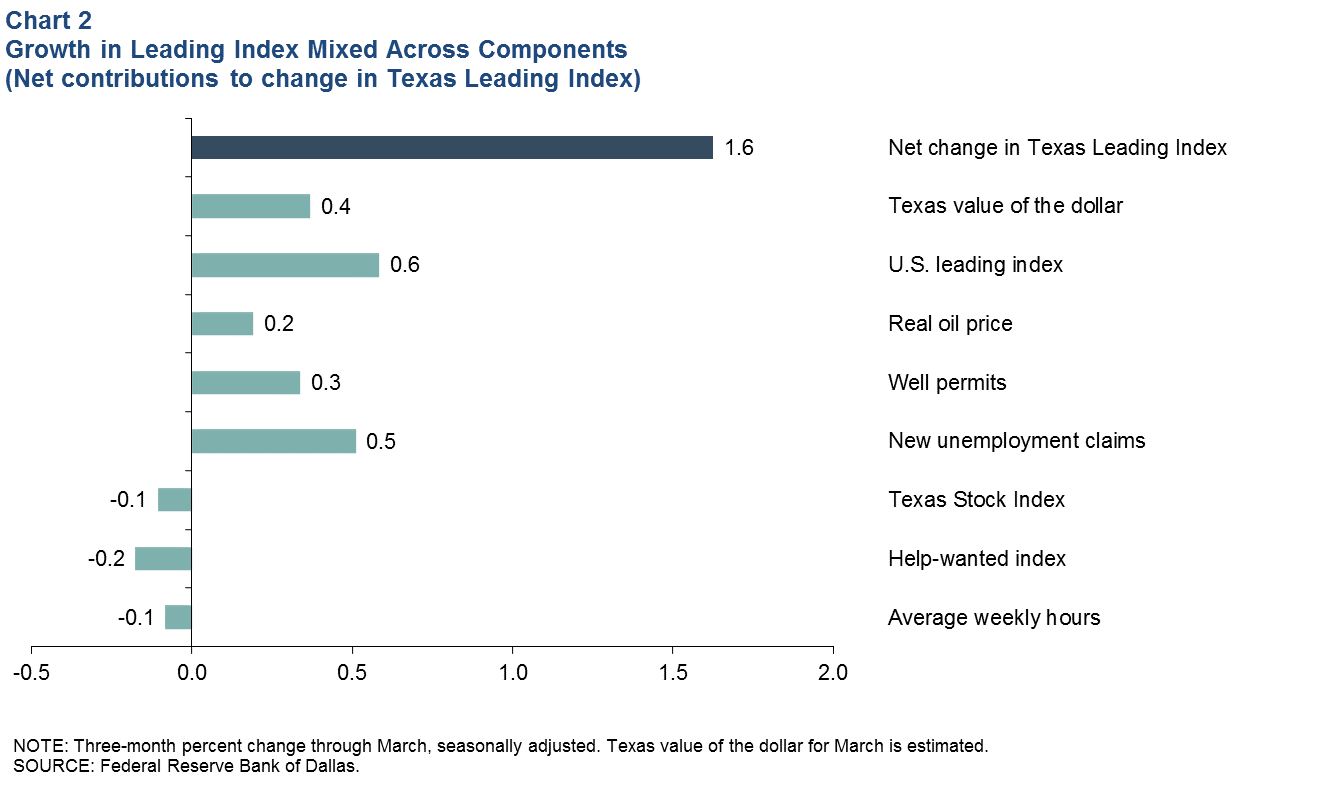Texas Employment Forecast

Incorporating March employment growth of 2.3 percent and leading index data, the Texas Employment Forecast suggests jobs will grow 3.4 percent this year (December/December), with an 80 percent confidence band of 2.2 to 4.6 percent. Based on the forecast, 417,500 jobs will be added in the state this year, and employment in December 2018 will be 12.8 million (Chart 1).
“Texas had strong first-quarter annualized job growth of 3.5 percent which, along with the continued growth in the leading index, bodes well for the months ahead,” said Keith R. Phillips, Dallas Fed assistant vice president and senior economist. “Energy jobs have grown at a sharp 21.7 percent so far this year, accelerating from last year’s 12.5 percent growth. Construction and professional and business services also picked up in the first quarter compared to 2017.
“Growth has also continued to be strong across most of the state’s major metros,” Phillips said. “Houston outpaced the state average with an annualized growth rate of 3.9 percent in the first quarter, while the I-35 corridor of San Antonio, Austin and Dallas–Fort Worth combined grew at a 2.9 percent rate.”
The Dallas Fed’s Texas Leading Index increased at a healthy pace over the first quarter, rising 1.6 percent (Chart 2). Growth was somewhat mixed across the index components. A rise in the U.S. leading index and a decline in initial claims for unemployment insurance were strong positive contributors to the index. A weakening of the dollar, which helps state manufacturing exports, and increases in well permits and the price of oil also helped the index. A decline in help-wanted advertising and average hours worked in manufacturing, along with weakness in Texas stocks, were a mild drag on the index.

Next release: May 18, 2018
Methodology
The Dallas Fed Texas Employment Forecast projects job growth for the calendar year and is estimated as the 12-month change in payroll employment from December to December. The forecast reported above is a point estimate with 80 percent confidence bands; in other words, the true forecast lies within the bands on Chart 1 with 80 percent probability.
The Dallas Fed Texas Employment Forecasting Model is based on a transfer function that utilizes past changes in state employment along with past changes in the Dallas Fed Texas Leading Index (TLI). Changes in the TLI have an impact on employment with a lead time of three months, and the effect dies out slowly over time. The regression coefficients on lagged changes in employment and the TLI are highly statistically significant, and the model as a whole has been accurate relative to other forecasters over the past two decades.
The forecasting model has been in use at the Dallas Fed since the early 1990s, and the employment forecast has been published in the Western Blue Chip Economic Forecast (WBCF) since 1994. Phillips and Lopez (2009) show that the model has been the most accurate in forecasting Texas job growth relative to other forecasters in the WBCF. In particular, the model had the lowest root mean squared error and has been the closest to the actual the most times (nine of the last 17 years) out of five forecasters that have consistently participated in the survey.
For more details about the model and its performance, see “An Evaluation of Real-Time Forecasting Performance Across 10 Western U.S. States,” by Keith R. Phillips and Joaquin Lopez, Journal of Economic and Social Measurement, vol. 34, no. 2–3, December 2009.
Contact Information
For more information about the Texas Employment Forecast, contact Keith Phillips at keith.r.phillips@dal.frb.org.